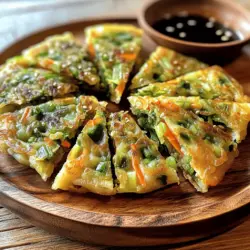
Pajeon: Korean Scallion Pancake
Savor the delightful flavors of savory Pajeon with this easy recipe! Whip up crispy pancakes loaded with scallions, carrots, and bean sprouts, perfect for a quick snack or a unique appetizer. Follow our step-by-step guide to achieve golden, delicious results every time. Get ready to impress your family and friends with this savory treat!